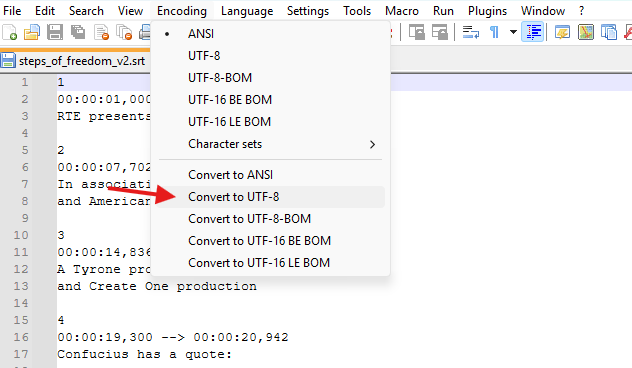A transcription of a video recording is not the same as subtitles for a film. Unlike subtitles, it cannot be viewed simultaneously with the film because timecodes have not been assigned to the texts. It has its own rules.
Creating a transcription for a film or audio content may seem easy. However, certain rules are not so obvious. Below, we present what we consider the most important principles of transcription.
I. BASIC RULES
- A transcription should be literal and contain all the sounds that may be heard in the recording.
- Uncertain/unintelligible words should be recorded in the same way as they were heard, marked with a timestamp: [? hh: mm: ss].
- Words with an unknown spelling should be written phonetically and marked with a stamp: [phonetic notation hh: mm: ss].
- We designate inaudible elements as follows: [inaudible hh: mm: ss].
- Interrupted statements should be marked using an ellipsis […].
- If only a fragment of a word is audible, it should be recorded.
- We place other audio elements, such as laughter, stuttering, emotion, weeping, indignation, shouting, in square brackets: [name of the element]. Comments regarding non-verbal events, such as the exiting of an interlocutor, a fight, etc. are recorded in a similar manner.
II. PEOPLE AND PROPER NAMES
- We record the utterances of each successive speaker in a new paragraph, inserting the name of the speaker:
[Court] Content of the utterance.
[Representative] Content of the utterance.
[First name Surname] Content of the utterance.
The tags should also include names and surnames when there is more than one person. Otherwise, it is enough to only mention the function: a witness, the defendant's representative, etc.
- When the speaker is unknown, we mention the speaker's gender using the following abbreviations. [M] for a man and [W] for a woman.
- Proper names, first names and last names should be capitalized.
- Abbreviations which are proper names should be written in a commonly accepted manner using the abbreviations assigned to them.
- Inflected proper names and abbreviation should be written in the way in which they were spoken. The use of abbreviations is not allowed.
III. SPELLING
- Numerals (in dates, names of departments, etc.) should be written in words.
- A sentence starts with a capital letter and ends with a full stop.
- A transcription reflects all language errors, repetitions, the original pronunciation and other audio elements.
And which transcription rules are important in your opinion?
Transcribing is indeed more than just writing down conversations, therefore, if you find it problematic, we would be happy to help you. Write to us.
Created on the basis of the guidelines of the National Coordinator for the coordination of implementing IT systems in common courts relating to the Civil Procedure Code of 5 October 2011 (source).


